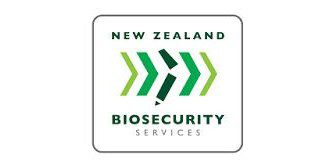
From left, Coral Princess, Seven Seas Explorer and Queen Elizabeth are three of the eight cruise ships that have failed to meet New Zealand’s biological fouling compliance so far this year
Long layups during the COVID-19 pandemic area major cause for thebiofouling of some cruise ships this season, Biosecurity New Zealand told Seatrade Cruise News.
Other contributing factors arethe number of new-to-cruise inexperienced personnel and the availability of qualified divers, according toPaul Hallett, environmental health manager,Biosecurity New Zealand.
Eight ships so far
He said eight cruise shipsfailed to meet New Zealand’s stringent biological fouling compliance so far this year.
Biofouling is the accumulation of microorganisms, plants, algae, or small animals on a ship’s hull.
The ships are Queen Elizabeth, Azamara Quest, Seven Seas Explorer, Silver Whisper, Pacific Explorer, Coral Princess, Viking Orion and Le Lapérouse.
Risk of introducing marine pests
Hallett said they were identified with various levels of biofouling that could introduce unwanted marine pests.
He said that, after consultation with Biosecurity New Zealand, several vessels underwent hull cleaning before they arrived.
One ship was directed to leave New Zealand waters, but was permitted to return once it had demonstrated evidence of a clean hull.
Restricted itineraries
He said five of the ships were subjected to restricted itineraries that allowed them to visit approved ports, but not sensitive areas like Fiordland National Park.
The other three were allowed to complete their proposed itinerary, with instructions on how to prepare for any future voyage to New Zealand.

Protocols since 2014
Hallett said New Zealand’s biofouling requirements, among the strictest in the world, are not new.
They were first issued in 2014 and came into force in 2018.
‘We are continuing to work closely with the shipping industry to ensure biofouling does not bring unwanted organisms into New Zealand by providing information to cruise lines prior to the arrival of their vessels,’ Hallett said.
‘We know that the New Zealand Cruise Association and vessel operators understand the importance of New Zealand’s strict biosecurity protocols to protect the country’s special marine environments, aquaculture industry and economy.’
Australia
‘It is well established that extended layup periods can result in higher than expected levels of biofouling,’ a spokesperson for Australia’s Department of Agriculture, Fisheries and Forestry said.
The spokesperson told Seatrade Cruise News the department has not denied entry to any cruise ship this season due to biofouling.
Viking Orion delay
However, divers were hired by Viking Cruises to clean the hull of Viking Orion while she was at anchor outside Australian waters offshore from the Port of Adelaide.
The delay meant she had to skip Adelaide and proceed to Melbourne for immigration clearance before arriving in Sydney on schedule.
DAFF requirements
DAFF requires cruise ship operators to have hulls cleaned 30 days before arrival in Australia.
Otherwise, they need to have an effective biofouling plan in place or employ an alternative biofouling method pre-approved by the department.
As reported here, the department is taking an ‘education first’ approach to biofouling requirements until December this year.
It is working with the industry to improve compliance with these requirements from global cruise lines.
. . (UK) Limited.




